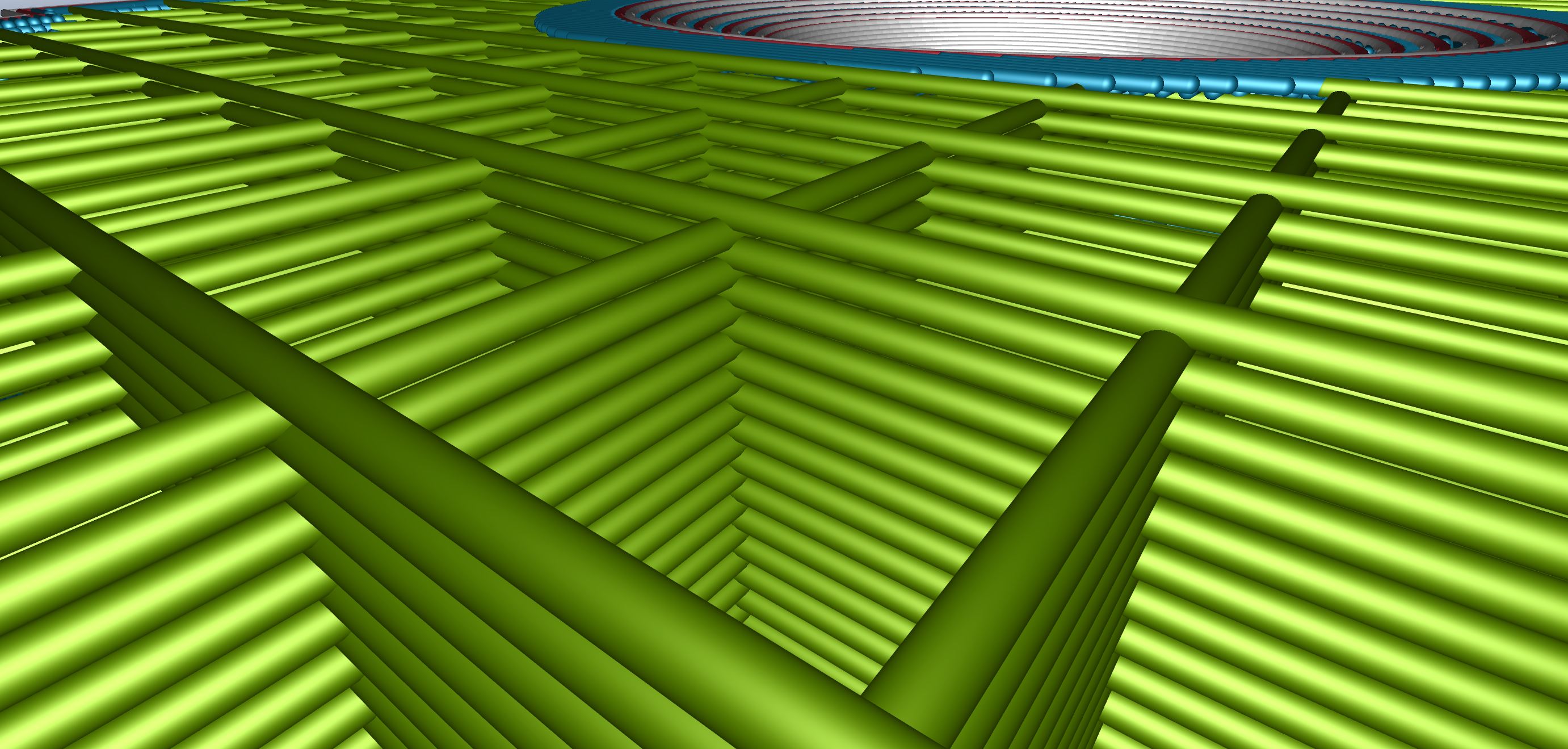... does Square really benefit a whole lot over parallel?
That would depend by the definition of "a whole lot", of course! :)
Strength
Generally speaking, the variable you want to operate to tweak the overall sturdiness of your part is not the type of infill, but rather its density. According to the literature I have access to, sturdiness grow fast until about 60 % infill, then the gains become progressively more marginal.
Different types of infill modify the way the part reacts to stresses. The two you showcased, for example, are strongly anisotropic: a part with those infill will resist a lot more to stresses along the Z axis than along either the X or Y ones.
Also, relative to the squared infill pattern, my experience is that parts with a parallel infill pattern typically have a bit more give when squashed.
In case you wonder: cubic, cubic subdivision (and solid) infills are those regarded as offering the most equal resistance along all axis.
However, the way the infill will affect rigidity and sturdiness of a part is as much dependent from the type of filament and the shape of the part as much as from the infill settings, so - if you are after precise numbers - you should most definitely run some tests.
Time
That depends entirely from the part shape and size.
Typically, a printer will spend most of its time printing the shell. This is due both to the settings (you want to go slow on the shell to increase quality) and to physics, the shell typically requiring many more changes of direction (and thus accelerations and decelerations) than the infill.
So, even if the parallel infill requires about half the work of the squared one (50 % faster), in a small print with a sparse infill, the total time spent doing infill may be 10 %, thus the net gain would be only 5 % of the total printing time.
Quality
This is very printer-dependent. For me, when printing with two shells, I can't tell the difference on any infill. For the top layer, the quality is affected more by infill density than type (with the filament sagging slightly between walls if the infill is very sparse).

